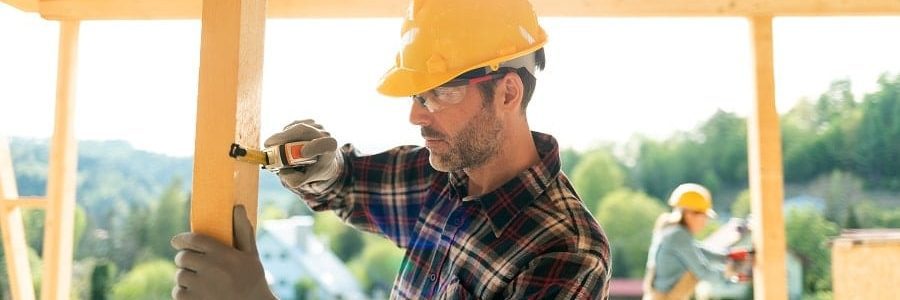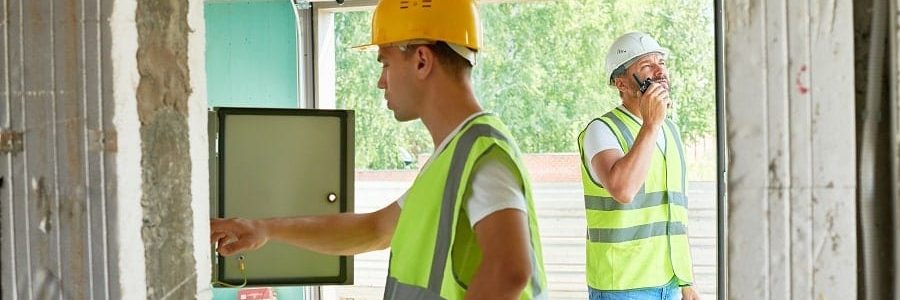The differences between a construction loan and a mortgage

Table of Contents
If you’ve ever wondered what the differences are between a construction loan and a mortgage, you’ve come to the right place. A construction loan is generally used to construct a house or to complete major renovations on an existing property. A mortgage is used to assist a borrower in buying a house, and usually cannot be used for anything else. If you’re wondering which loan would be right for you, it would depend on whether you were trying to build a house or need help in purchasing an existing one.
Read on below to find out more about the differences between a construction loan and a mortgage.

The differences between a construction loan and a mortgage
A construction loan allows you to borrow funds to build a home or investment property. Construction loans can usually be used to fund major renovations to existing properties, depending on the size of the renovation taking place. A construction loan is typically set up as a progressive drawdown loan. That means that instead of receiving one lump sum in the beginning, you will receive funds for each stage of the build as they happen. Generally, you only have to pay interest on the amount that is withdrawn, rather than the whole loan amount.
Unless you already own the plot of land that you will be constructing your property on, your loan will usually need to cover its purchase price, plus the cost of construction.
A construction loan will usually be a shorter-term loan – generally around a year or two. This means that you have this loan period to complete your build. Once construction has been finished, you will switch to a mortgage. This mortgage is sometimes called an end loan and is used to pay off the remaining construction costs and value of the land.
A mortgage, on the other hand, is a loan where real estate is used as collateral. A mortgage is usually used to finance your home or an investment property so you don’t need to pay the entire cost upfront. You will then pay back the loan, with interest, in repayments made over a period of time. Your mortgage lender will usually be listed on the title of your property until the entire mortgage has been repaid.
Typically, a mortgage can either be a variable or fixed rate. Having a variable loan means that the lender can change the rate of your loan, depending on the state of the financial market. A fixed-rate loan means that your rate locked in and will not change or become lower. Some lenders may even offer a split rate loan, which is where some of the loan is fixed for a period of time, and then becomes variable.
A mortgage is generally secured against your property. If you are unable to continue paying off your loan, your lender may be able to take your property and sell it themselves to settle your remaining debt.

Which would suit my needs?
Which type of loan you choose would depend on what exactly you need to do. If you were looking to build a home or complete a major renovation, you would choose a construction loan. If you were looking to purchase an already built home, you would apply for a mortgage. The key differences between a mortgage and a construction loan are with how the funding is received.
In the case of a standard home loan, you will generally receive the money you need to buy your house and land as one lump sum at the beginning of your loan. You will then spend the remaining loan term making repayments to your lender, as well as paying interest on your mortgage.
With a construction loan, the funds are typically drawn down in stages as the build proceeds. Instead of receiving the money as one lump sum at the beginning of your loan term, you will draw down the loan in stages. One stage would be laying the foundation, another putting up the frame, and so on. This offers a form of protection to the borrower in that it helps to prevent overspending.
Some construction loans can be interest-only loans while your house is being built. Interest will also usually only be charged on the money you’ve drawn down, and not on the total amount of the loan. This may help to keep your payments low until construction has been completed, and you move to a form of end loan.


Where does Tiger Finance come in?
We have helped countless Australians with both good and bad credit ratings to be funded for their dream build. We understand that lending criteria from other lenders are too strict, and can stop you from achieving your goals. That is wrong, and it should not hold you back.
With Tiger Finance, we can help to get you a loan in four easy steps. You will have a free consultation with one of our specialists, and we will tailor-make you a loan. We will negotiate with lenders on your behalf before you are approved.
How we can help
Our finance specialists can help you find the right construction loan for your project. Construction finance is a complicated topic, but we will find a loan that makes your dream project that much easier.
If you are one of the many Australians finding getting a construction loan difficult, Tiger Finance can make the process simple and pain-free. Call us today for your free initial consultation with one of our loan specialists.
Table of Contents
Find MOre Information

A Step-by-Step Guide to Refinancing Your Mortgage Even with Bad Credit
A Step-by-Step Guide to Refinancing Your Mortgage Even with Bad Credit Table of Contents Owning a home is a dream for many Australians, and even

Navigating the Challenges of Refinancing with Bad Credit
Navigating the Challenges of Refinancing with Bad Credit Table of Contents Refinancing your home loan can be a powerful financial tool in Australia. It allows

Refinancing with Bad Credit: Pass or Fail?
Refinancing with Bad Credit: Pass or Fail? Table of Contents Conquer the Challenges with Tiger Finance Owning a home is a dream for many, but

Debunking the Refinancing with Bad Credit Myths
Debunking the Refinancing with Bad Credit Myths Table of Contents Refinancing with bad credit is often viewed with scepticism and uncertainty. Many myths portray refinancing





